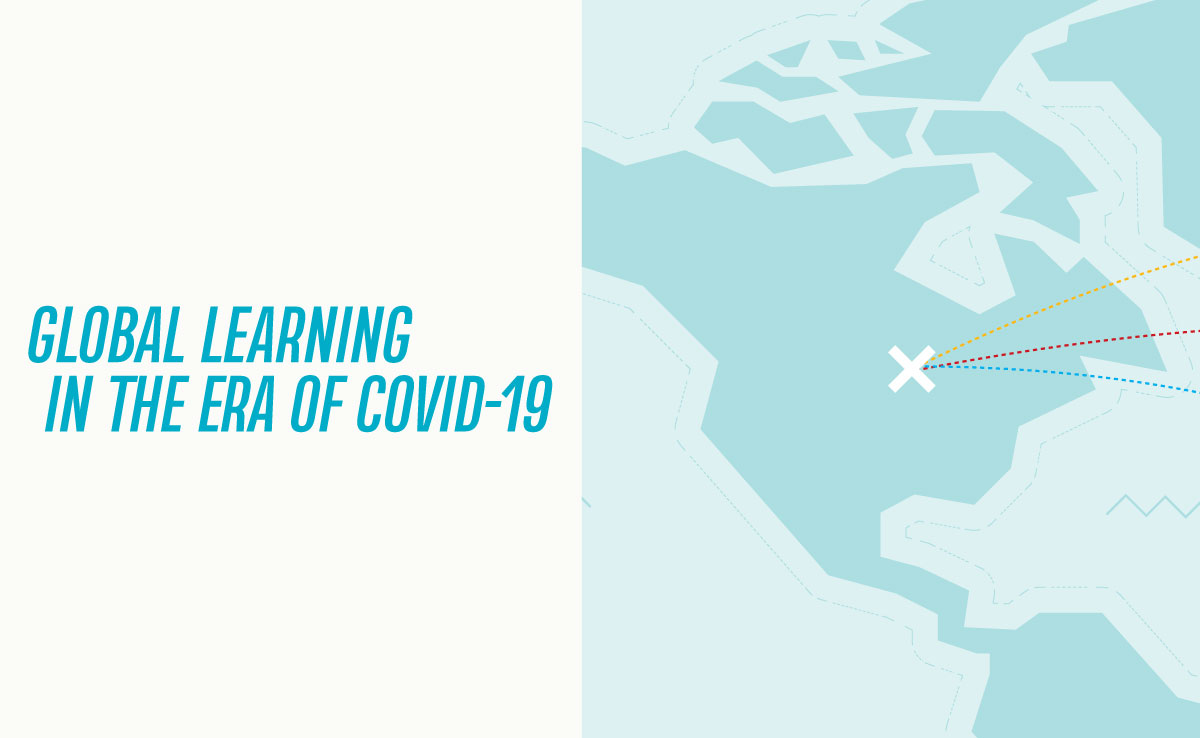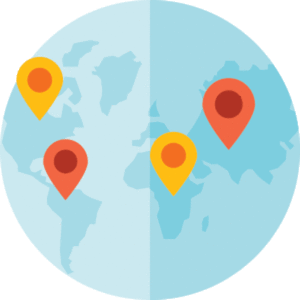Global Learning in the Era of COVID-19
From 12-hour time differences during remote learning to staying on campus year-round, Hope helps international students navigate the unexpected.
If you want to put yourself in the shoes of a COVID-era international student, try on these scenarios from spring 2020 — the early months of the worldwide pandemic.
You need a visa to fly from the Philippines to Michigan to start your freshman year at Hope College. You line up an appointment at the U.S. Embassy in Manila. The embassy shuts down. (In this scenario, you are Jairus Meer ’24.)
Partway through your junior year study abroad program in Australia, COVID-19 hits and your program’s classes go remote. Your home country, Rwanda, closes its borders. (Kenneth Munyuza ’21.)
After Hope College switches to virtual instruction, your American dorm mates pack their belongings and leave, and you wonder, Should I go home now to Malaysia, or will students be called back to campus in a few weeks? (Andrea Koh ’22 sticks it out into April. Aware that some Hope international students’ travel plans keep falling apart, when she finally books her three-hop, nine-thousand-mile trip home, she also takes some cash out of the bank in case one of her connecting flights is canceled and strands her en route.)
A year later, a bright spot amid the continuing pandemic: All three students are on campus this semester, engaged in Hope classes and activities. But it’s been an adventure, to put it mildly, for international students to study at American colleges over the past year.
“When you are across a border or across an ocean, apart from family, far from the culture and society you are familiar with, whether or not there’s a global pandemic it’s hard,” said Amy Otis ’96. As senior director of Hope’s Fried Center for Global Engagement, she leads the team that supports international students and off-campus study.
“When there’s an emergency situation on top of that, loneliness, fear and a sense of being overwhelmed tie into that,” Otis continued. “The pandemic has been overwhelming for all students, but international students have to deal with questions that ramp up. Can I return home or not? Are there flights to my home country? If there are, can I afford to fly home? Am I better off staying in this country or going home and studying remotely?”
Sixty-four international students are enrolled at Hope this spring. They hail from 25 countries, from Argentina to Zambia. Just six of them are studying from home this semester, far fewer than the 23 who studied remotely in the fall — some due to safety concerns and others forced by circumstances such as travel restrictions, airfare price spikes and inability to obtain visas. Uncertainty about such issues led 12 others to take off part or all of Hope’s 2020–21 academic year.
International travel is easier now than in 2020, but challenges continue. “We had a student from Vietnam whose flight to the U.S. would have been about $7,500,” Otis said. He is studying remotely this semester.
So are three Chinese students who would have been required to quarantine in another country for two weeks before entering the United States, Otis said. A Nepalese student is attending classes online for his entire freshman year because well into 2021 the U.S. Embassy in Kathmandu was not yet fully operational, so he could not get a visa.
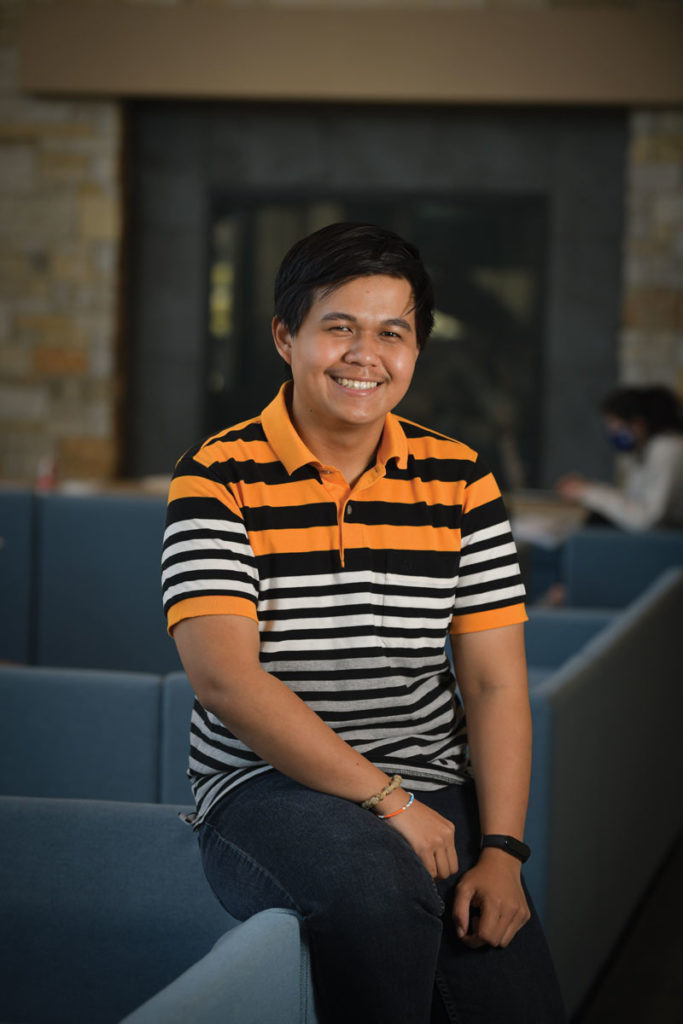
Jairus Meer ’24
Major: Biology
Minor: Peace and Justice Studies
Home Country: Philippines

“Hope faculty have been amazing in trying to accommodate learners who are running into those kind of barriers,” Otis said.
These students are making it work with virtual classes, but studying remotely from great distances involves adjustments way bigger than mastering Google Meet. It’s like working the night shift. As Meer experienced all fall at home in Manila and Koh had to deal with in her home city of Kuala Lumpur for the final weeks of last year’s spring semester, in their time zone in south Asia a class that met at 1 p.m. on the Hope campus came up on their screens at 1 a.m. (give or take a daylight saving time hour). To ask questions outside of class, they made video chat appointments for times like 3 a.m.
“That will never get off my mind. It was a struggle,” said Meer.
Weekly conversations with his professors helped, and so did talking online with international students who were on the Hope campus. “It’s interesting how amazing the Hope community has really been — including international students like me to be engaged in their community,” he said. Even while he studied from abroad, he felt like he was “in the conversation.”
Meer, who plans to major in biology and minor in peace and justice studies, tapped during the fall into Hope’s Peer Partnership Learning program, an initiative of the Academic Success Center in which upperclassmen teach newer students about particular courses and topics. He also was able to work remotely with writing assistants in the Klooster Center for Excellence in Writing and learn from the Boerigter Center for Calling and Career about professional options for biology majors.
Happy to be on campus this semester, Meer is making up for lost time. He joined the Asian Student Union and the Hope Interfaith Youth Alliance. He’s looking into the sailing team, too — something new for him. “That fall semester really opened me into different realms of being open and curious about things,” he said.
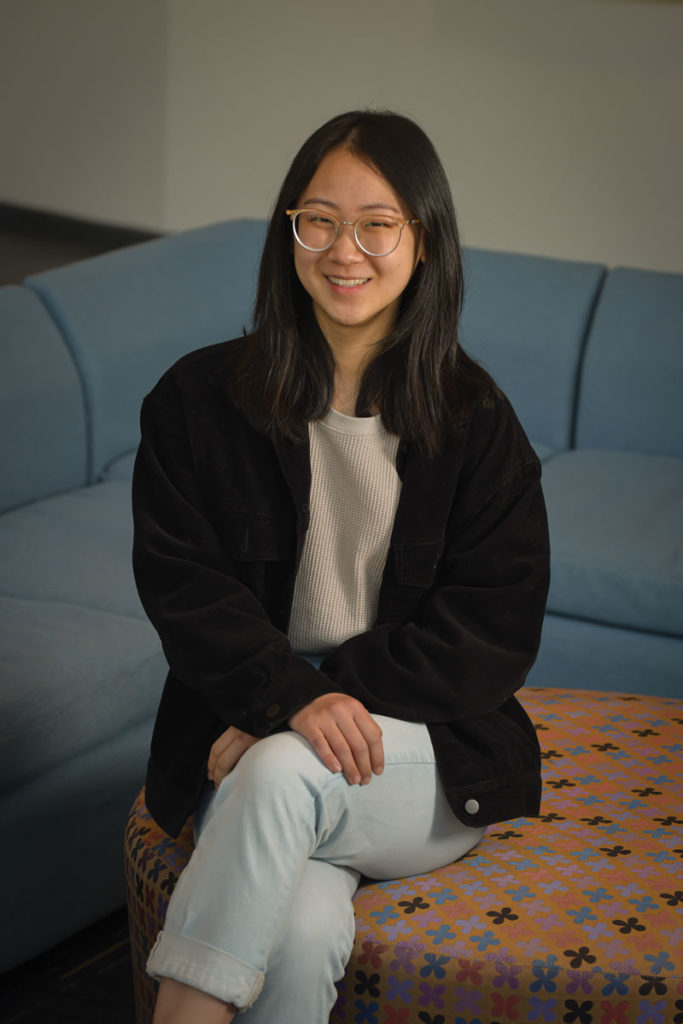
Andrea Koh ’22
Major: Kinesiology
Home Country: Malaysia

For Andrea Koh, finishing the first COVID spring in Kuala Lumpur went without a hitch. She’s a planner. Before going home in April, the kinesiology major arranged to get a week ahead in her classwork in case she encountered travel delays. “I’m grateful for my professors; they were really nice about it,” she said. The fact that she was home schooled was a plus; her home is set up for studying. “Malaysia was in lockdown, too. It made it easier to stay in and study,” she said. She slept from 4 a.m. until noon to stay close to “Michigan time” until the semester ended.
Since she returned to Hope in August, Koh’s classes have been a mix of “instructional modalities”: online, in person and hybrid. She spent the four-week winter break on campus, taking Hope up on its offer of free housing for students who could not return home.
After the fall semester ended, Hope’s Haworth Hotel became home base for 24 international students (about twice the usual number) plus some American students. Hope also provided some free meals, and the Global Engagement staff created a food pantry so students could prepare other meals on their own; the staff kept it stocked with food donated by the Hope community and other Holland residents. “Host families,” which Otis’s team arranges routinely for Hope’s international students, provided care packages until dining halls reopened.
“International students put a lot of trust in us as an institution that we are going to walk with them and take care of them,” Otis said. “We work really closely with various departments anyway to make sure students feel they have a home away from home at Hope. We had to advocate for our students in new ways.”
All year, Global Engagement staff have checked in regularly with international students in one-on-one online conversations and socially-distanced walks. How’s your family? Is everyone staying healthy? The staff know that for the 58 international students who are on campus this semester, being far from home during the pandemic has extra layers of complication and emotion.
Malaysia became locked down again, with interstate travel banned; Koh’s mother and grandmother could not celebrate Lunar New Year together.
Meer reports that people in Manila remain skeptical of the Philippine government’s daily COVID reports. “Hospitals are still struggling, and there’s a lot of politics,” he said.
And although Rwanda has tallied fewer COVID-19 cases than Hope College’s county has, the country went back on lockdown in February.
“Hope has been trying to give students a lot of ways to relieve stress,” said Kenneth Munyuza, who is back on campus now for the first time since the end of 2019.
Things worked out okay for him last spring after his program in Australia pivoted to virtual instruction; he was able to remain in the housing the program provided, though he had to cook for himself. By the time the program ended, Rwanda’s borders had reopened and he went home.
Munyuza has an unusually broad perspective on COVID’s impact on students’ lives: from the viewpoint of a study abroad participant, a remote learner, a student on campus during the pandemic, and even as someone who’s been quarantined.
Because “there was so much mixed news about the United States,” the computer engineering major took his fall classes remotely from his home in Kigali, seven hours out of sync with the Hope campus.
“From friends I spoke to who were doing remote courses at other American schools, Hope seems to have done a better job,” he said. Professors provided lots of online resources and opportunities to talk with them outside of class. The college provided other types of support, too. “And I was really surprised that they handled the pandemic so well and stayed open all semester,” he added.
So Munyuza returned to campus in January. Due to close contact with another student who later tested positive for COVID, however, he had to spend the first two weeks in quarantine. He transitioned to classes in person in February.
Mixes of stories like that are common among Hope’s international students, here and abroad. Otis receives a steady stream of feedback from them.
“The international students who are remote really miss Hope. They miss the community. They would like to be in in-person classes. I hear them worrying about how this will affect their academic plans,” Otis said. “The students who are here continue to lean into the international community and the Hope community. They’re grateful to be here, to be able to do as much as they can in person, and grateful for the support the Hope community has provided them.”
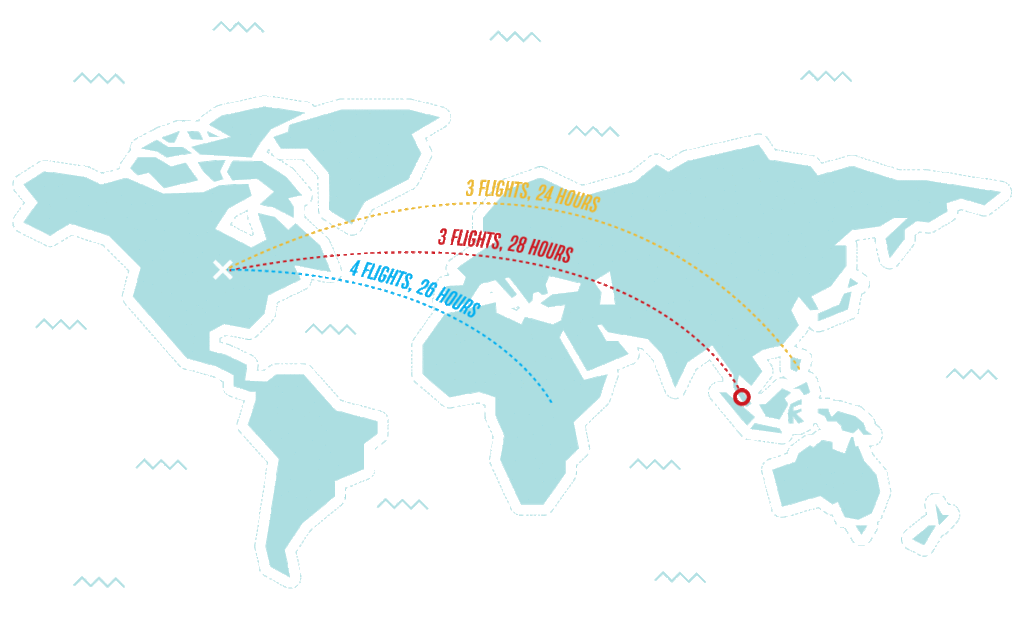
| Jairus Meer ’24 | Andrea Koh ’22 | Kenneth Munyuza ’21 | |
|---|---|---|---|
| World Travelers | has been to Austria, France, Canada, Italy, Japan, Malaysia and Australia | visited Japan, Thailand, Singapore, China and the Netherlands | has spent time in Australia, Kenya, Uganda, South Africa, Belgium, England and India |
| Multilingual | speaks Tagalog and English | speaks English, Malay, and some Hokkien | fluent in English, Kinyarwanda and French |
| Favorite food at Home | dinuguan, a Filipino pork dish | rojak, a Malaysian salad with tofu, shredded vegetables and curry sauce | isombe, a Rwandan stew of mashed cassava leaves and other vegetables |
| Favorite food at Hope | Crust 54 pizza and Kilwin’s ice cream | bibimbap at Phelps Dining Hall | “I don’t like the food here. Maybe tacos?” |
| Weather Report | “I have never been this cold before.” | “I love it! All my friends back home are jealous.” | prefers one temperature year round. “Fall isn’t bad.” |
International students put a lot of trust in us as an institution that we are going to walk with them and take care of them.
We work really closely with various departments anyway to make sure students feel they have a home away from home at Hope.
Pandemic Limits Off-Campus Study
A few fortunate Hope students are studying abroad and in four U.S. cities this semester, but others had to postpone those plans when most off-campus study programs suspended operations during the COVID-19 pandemic, unsure of what the spring would bring.
Amy Otis ’96, senior director of Hope’s Fried Center for Global Engagement, expresses a great deal of confidence in the programs Hope partners with that remain open. They have put in place health and safety guidelines that include protocols for quarantining or relocating students, she reports, and for returning students to their home countries to complete coursework remotely if COVID alert levels force a program to suspend operations in a particular country. Some require testing before students arrive, or start with a period of on-site quarantine, or conduct orientation remotely.
This spring, Hope students are participating in four off-campus programs in the U.S. and four overseas.
The domestic programs that are operating include the Hope Department of Political Science’s Washington Semester Program, which takes Hope juniors and seniors to D.C., where they participate in seminars and internships. The other off-campus programs running this spring take place in Chicago, New York City and Denver.
Farther afield, four other Hope students are enrolled in programs on other continents: one in Greece, one in South Korea, one in Kenya and one in China. (China is home to the latter student, who under the State Department’s tightened travel rules would have had to spend two weeks or more in another country on the way from China to Hope in order to be allowed to enter the U.S. Instead, he enrolled in a Chinese study abroad program with which Hope partners.)
Three other Hope students who were poised to participate in spring semester programs in Japan had to pivot quickly when those programs were canceled in late January. They quickly registered for classes at Hope instead.
Hope’s usual roster of May Term travel-study courses has been winnowed this year to just one, the Adirondacks May Term led by Dr. Steven Bouma-Prediger ’79, which is a self-contained outdoor program.

